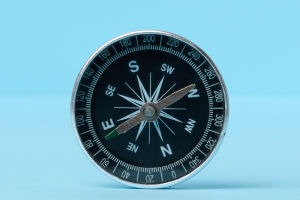Wind energy is generated by the kinetic energy of airflow and is a form of conversion of solar energy.
The pressure distribution in the atmosphere is unbalanced due to the uneven heating of various parts of the Earth's surface by solar radiation. Under the influence of the horizontal pressure gradient, the air moves along the horizontal direction to form the wind.
The total reserves of wind energy resources are enormous, and the energy that can be developed by technology in a year is about 5.3X10^13 kWh. Wind energy is renewable clean energy with vast reserves and widespread distribution.
However, its energy density is low and unstable. Under specific technical conditions, wind energy can be developed and utilized as a significant energy source.
Humans have been utilizing wind energy for thousands of years, but due to the slow development of wind energy technology, it did not attract enough attention.
However, since the world oil crisis in 1973, under the dual pressure of the shortage of conventional energy sources and the deterioration of the global ecological environment, wind energy, as a part of new energy sources, has made great progress again.
As a non-polluting and renewable new energy source, wind energy has enormous potential for development, especially in coastal islands, remote mountainous areas with inconvenient transportation, and grasslands and pastures with vast land and sparsely populated areas.
Wind energy is a reliable way to solve production and living energy, and it has great significance.
Under the general trend of the global low-carbon economy and energy revolution, the international community pays more and more attention to energy security, the ecological environment, abnormal climate, and other fields.
It has become the general consensus and concerted action of all countries in the world to reduce the burning of fossil energy and accelerate the development and utilization of renewable energy.
Wind energy resources are renewable and clean energy sources, which are non-polluting, renewable, powerful, and promising new energy sources. Wind energy has many benefits for environmental protection, including eliminating local air pollution and reducing water consumption.
But the most significant is the contribution to the reduction of carbon dioxide emissions. This is currently one of the most efficient ways that humans can make the greatest contribution to the problem of global climate change.
In 2015, for the first time, the newly installed capacity of renewable energy power generation in the world exceeded the newly installed capacity of conventional energy power generation, and the construction of the global power system underwent structural changes.
Thanks to the advancement of wind power technology and innovation in business models, the wind energy industry has ushered in a period of rapid development, and the newly installed capacity of wind power in the world has risen rapidly.
At present, wind power, as renewable energy with mature technology and environmental friendliness, has achieved large-scale development and application worldwide. By the end of 2021, more than 100 countries worldwide had begun to develop wind power.
Among them, the United States, Denmark, the Netherlands, the United Kingdom, Germany, Sweden, Canada, and other countries have invested a lot of manpower and funds in the research and application of wind power generation.
With the continuous development of technology, the utilization efficiency of wind energy is continuously improving, and the cost of wind power generation is also continuously reducing.
According to statistics, the cost of wind power has been lower than that of traditional energy, and it has become the first choice of renewable energy in more and more countries.
At the same time, wind power generation has high flexibility and adjustability, which can meet the power grid's demand regulation and provide important support for the balance and stability of the grid. Additionally, wind power generation will not be affected by factors such as fuel prices and insufficient supply, so it has high reliability and stability.
In the future, with the accelerated transition towards renewable energy and the restructuring of the energy sector, wind energy will be increasingly utilized and developed as a clean and sustainable source of power.
It is projected that by 2030, the global installed capacity of wind power will exceed 10,000 megawatts, making wind power one of the most significant renewable energy sources worldwide.


